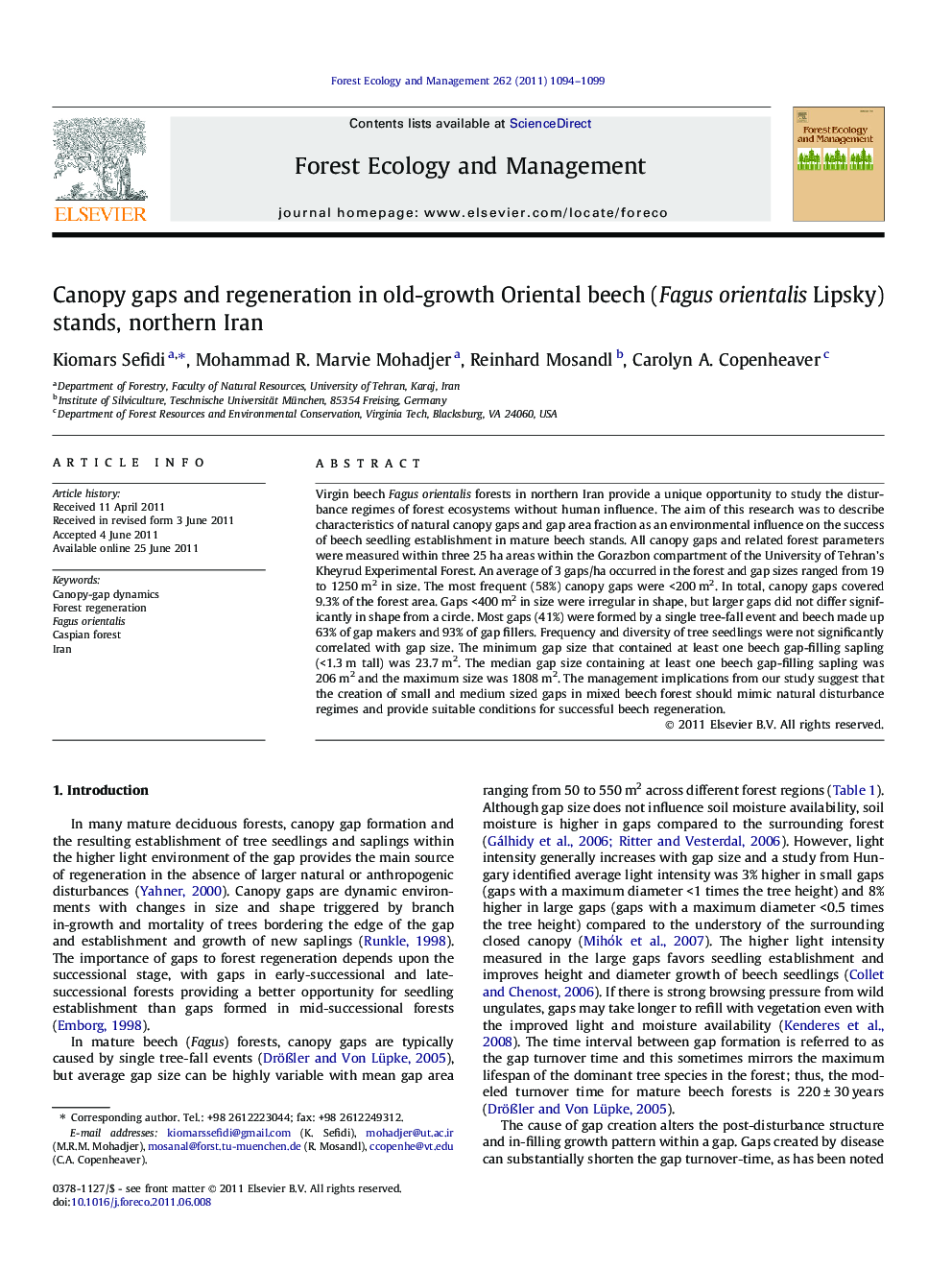| Article ID | Journal | Published Year | Pages | File Type |
|---|---|---|---|---|
| 87853 | Forest Ecology and Management | 2011 | 6 Pages |
Virgin beech Fagus orientalis forests in northern Iran provide a unique opportunity to study the disturbance regimes of forest ecosystems without human influence. The aim of this research was to describe characteristics of natural canopy gaps and gap area fraction as an environmental influence on the success of beech seedling establishment in mature beech stands. All canopy gaps and related forest parameters were measured within three 25 ha areas within the Gorazbon compartment of the University of Tehran’s Kheyrud Experimental Forest. An average of 3 gaps/ha occurred in the forest and gap sizes ranged from 19 to 1250 m2 in size. The most frequent (58%) canopy gaps were <200 m2. In total, canopy gaps covered 9.3% of the forest area. Gaps <400 m2 in size were irregular in shape, but larger gaps did not differ significantly in shape from a circle. Most gaps (41%) were formed by a single tree-fall event and beech made up 63% of gap makers and 93% of gap fillers. Frequency and diversity of tree seedlings were not significantly correlated with gap size. The minimum gap size that contained at least one beech gap-filling sapling (<1.3 m tall) was 23.7 m2. The median gap size containing at least one beech gap-filling sapling was 206 m2 and the maximum size was 1808 m2. The management implications from our study suggest that the creation of small and medium sized gaps in mixed beech forest should mimic natural disturbance regimes and provide suitable conditions for successful beech regeneration.
► Canopy gaps are dominant source of regeneration in Iranian beech forests. ► Most gaps formed in single-tree fall events. ► Median gap size was 178 m2. ► Gap size did not significantly influence seedling density. ► Fagus orientalis filled 93% of gaps.
